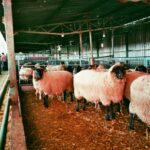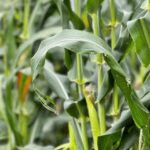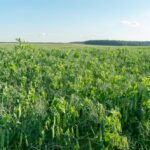Fuel prices are a significant factor in the cost structure of farming, influencing everything from the operation of machinery to the transportation of goods. As one of the most energy-intensive industries, agriculture relies heavily on fuel for a variety of processes, including planting, irrigation, harvesting, and the delivery of produce to markets. Any fluctuations in fuel prices, whether increases or decreases, can have far-reaching consequences for farmers and the broader agricultural economy.
This article will explore the impact of rising fuel prices on farming costs, how they affect farm productivity, and what farmers can do to mitigate these challenges.
Why Fuel Prices Matter in Farming
Agriculture is an energy-intensive industry that depends on various forms of fuel for its operations:
- Diesel fuel: Used for tractors, harvesters, irrigation pumps, and other machinery.
- Gasoline: Powering smaller vehicles and equipment.
- Natural gas and propane: Used in irrigation, heating greenhouses, and some drying processes.
As the prices of these fuels rise, farmers face higher operational costs, which can lead to significant financial strain. For many farms, particularly smallholders with tight margins, fuel price hikes can directly affect profitability and productivity.
How Fuel Price Increases Impact Farming Costs
1. Higher Machinery Operating Costs
One of the most immediate impacts of rising fuel prices is the increased cost of running machinery. Tractors, combines, and harvesters are the backbone of modern farming, and they all run on fuel. Whether it’s plowing fields, planting seeds, irrigating crops, or harvesting produce, fuel is required for nearly every major agricultural operation.
When fuel prices increase, the cost of operating these machines also rises. The higher the fuel consumption of the machinery, the more significant the cost impact on farm operations. For large-scale farms, this can add up to thousands of dollars in additional fuel expenses each year. For smaller farms, this may be enough to push them into financial hardship, as they have less ability to absorb these increased costs.
2. Increased Costs for Fertilizers and Pesticides
Many agricultural inputs, such as fertilizers and pesticides, are produced using petrochemical derivatives, which are directly linked to fuel prices. The production and transportation of these chemicals rely heavily on fuel, so when fuel prices rise, so do the prices of fertilizers and pesticides.
Farmers are faced with paying higher costs for these essential inputs, which can strain budgets, especially in years when crop yields are already lower due to unfavorable weather conditions or pests. As fertilizer prices rise, farmers may also reduce the amount they apply, which could negatively impact crop yields, further exacerbating the situation.
3. Increased Transportation Costs
Once crops are harvested, they need to be transported to processing facilities, markets, or storage. The transportation of agricultural goods—whether by truck, rail, or ship—requires fuel, and any increase in fuel prices directly raises the costs of moving crops from farm to market.
Farmers may see an increase in transportation costs for both raw agricultural products and finished goods, which can lead to a rise in the final price of food products. This increase in costs may not always be absorbed by consumers, and farmers may find themselves paying more for logistics, reducing their profit margins. In some cases, farmers may even find it economically unfeasible to transport certain crops to market, leading to waste and lost revenue.
4. Impact on Irrigation Costs
In regions where irrigation is essential for crop growth, fuel prices have a significant impact on the cost of water management. Many irrigation systems, especially in more rural areas, rely on diesel-powered pumps to move water from wells or reservoirs to crops.
As fuel prices rise, the cost of running these pumps also increases. For farmers who rely heavily on irrigation, this additional expense can quickly add up, making it more difficult to maintain crop yields. In some cases, higher fuel costs may even force farmers to reduce irrigation frequency or scale back their operations, leading to lower crop production.
5. Potential Impact on Labor Costs
Labor costs are another area that can be indirectly affected by rising fuel prices. If farmers need to increase their use of machinery to make up for higher fuel costs, they may require fewer workers for certain tasks, leading to a reduction in labor costs. However, in other cases, farmers may need to hire more workers to help with increased workloads due to higher input costs, which could lead to an increase in labor expenses.
Additionally, if fuel prices are high enough, workers may need to be compensated for the increased transportation costs to and from the farm, further driving up the overall cost of labor. These rising costs could lead to wage adjustments or, in some cases, a reduction in farm workers’ hours.
The Effect on Crop Prices and Consumer Costs
Rising fuel prices not only affect farm-level costs but also have a ripple effect throughout the entire agricultural supply chain. As production costs rise, these increased costs are often passed on to consumers in the form of higher food prices. This can lead to inflationary pressure on food prices, especially for fuel-intensive crops, such as grains, fruits, and vegetables, which require significant energy input for planting, irrigation, harvesting, and transportation.
For consumers, this means paying more for everyday food items, which can be especially burdensome for low-income households. For farmers, however, the ability to pass on these costs depends on market conditions and the level of competition. In some cases, farmers may be unable to raise prices enough to fully cover the rising fuel costs, leading to squeezed margins.
Strategies for Farmers to Mitigate the Impact of Rising Fuel Prices
While the effects of rising fuel prices on farming costs can be significant, there are strategies that farmers can employ to mitigate the impact and protect their profitability.
1. Invest in Fuel-Efficient Machinery
Upgrading to more fuel-efficient machinery can help reduce the overall fuel consumption of farm operations. Modern tractors, harvesters, and irrigation systems are designed to use less fuel while offering the same or improved levels of productivity. Although initial costs may be high, the long-term savings on fuel can make the investment worthwhile.
2. Implement Precision Agriculture Technologies
Precision agriculture uses technology, such as GPS and data analytics, to optimize farming practices and reduce unnecessary fuel consumption. By using precise measurements to monitor crop health, soil moisture, and fertilizer needs, farmers can reduce the amount of fuel used for irrigation, fertilization, and pest control. This can help lower fuel expenses while maintaining or even improving yields.
3. Consider Alternative Energy Sources
Some farms are exploring alternative energy sources, such as solar, wind, or biofuels, to power certain farming operations. For example, solar-powered irrigation systems or wind-powered generators can reduce reliance on diesel and gasoline for farm machinery and irrigation. By incorporating renewable energy, farmers can reduce their exposure to volatile fuel prices and lower their long-term energy costs.
4. Increase Operational Efficiency
Improving the efficiency of farming operations can help reduce fuel consumption. This could include optimizing planting and harvesting schedules to avoid unnecessary machine usage, reducing the number of trips needed for transportation, and using more efficient irrigation systems. Implementing these changes may require an upfront investment, but they can result in significant fuel savings over time.
5. Diversify Crop Production
Diversifying crops can also help mitigate the effects of rising fuel prices. By planting a range of crops that require different amounts of energy to grow and harvest, farmers can spread out their fuel usage and reduce the impact of fuel price hikes on any one crop. Crop diversification can also provide income stability in the event of market fluctuations.
Fuel prices are a key factor influencing farming costs, and rising fuel prices can have significant economic implications for farmers. Higher fuel costs increase the price of operating machinery, transporting goods, and applying agricultural inputs, all of which contribute to increased production costs. As fuel prices rise, farmers may face squeezed profit margins, which can lead to higher consumer food prices.
To combat these challenges, farmers can adopt strategies like investing in fuel-efficient machinery, implementing precision agriculture techniques, and exploring renewable energy options. By taking proactive steps, farmers can mitigate the financial strain caused by rising fuel prices and maintain a more sustainable and profitable operation. Ultimately, the ability to adapt to these changes will determine how well farms can weather fluctuations in fuel prices while continuing to meet the global demand for food.
Join 'Farmers Mag' WhatsApp Channel
Get the latest Farming news and tips delivered straight to your WhatsApp
CLICK HERE TO JOIN






